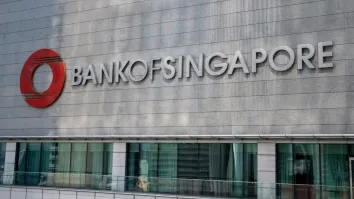Why we should rethink the ethics of finance
By Betty WilkinsonThe changing landscape of finance is a huge subject so let’s start with a short history of banking (thanks here to Wikipedia).
The word actually comes from banca or bench where the moneylenders sat. From day one, business owners wanted to make money.
In Babylonia in the year 2000BC, and also in ancient Egypt and in China, there were deposits in commodities, lending in cash and commodities, and interest flows. In Rome and Greece, they allowed interest rates to be standardized.
Modern banking in the Italian states started about the 12th century. In the 15th century, banking in Germany and Poland started to grow, followed by Spain, Turkey and the Ottoman Empire, and in the 16th century, Dutch German and English banking emerged.
The US after 1865 recognized a national system of banks.
In the 1900s, Bretton Woods stabilized international finance and encouraged bank lending to sovereign states. From the 1980s we have had deregulation, globalization and consolidation with 55% of financial resources held by the top 5 banks in the world, and 80% of the financial traders working in the top 10 banks by 2010.
By some estimates, there may have been one million banks worldwide before the latest global financial crisis hit.
And what of the social role of banks? While they have been keen on talking about client services and how financial services help real sectors grow, the focus is clearly on profit for owners.
Deposit insurance and central bank regulation have been brought in to provide government oversight to ensure that bank savings customers have some protection from losses due to bank decisions about lending and other related services.
Owners rarely lose, and that was shown dramatically in the bailouts of larger banks during the crisis.
Now, let’s talk about microfinance. Just like banking, microfinance started with money lenders and with self-help informal arrangements all over the world. The forms included revolving savings groups, savings pools plus lending, lending among family groups, funeral societies, and mutual insurance arrangements.
These arrangements have existed for thousands of years. Modern microfinance started with the NGOs in the 1950s and 1960’s when groups working with the poor realized that their beneficiaries needed credit to leverage their labor.
NGOs couldn’t scale up fast enough, so the solutions were thought to be credit unions and growing microcredit organizations into banks. Growth and outreach to the poor were the objectives, although cost effectiveness and some profitability were also important. Savings was recognized as important in the late 1990s and by the mid 2000s insurance, long term savings, other forms of credit and remittances were also critical services being provided for the poor.
Microfinance institutions (or MFIs) have a wide range of forms, from full service banks to informal groups, and the range of regulation is equally broad.
By the early 2000s we see concerns emerging about transparency of services to clients and the need to target clients more effectively, making sure financial products help clients move up and out of poverty. The concept of a double or triple bottom line of financial profit, social returns, and environmental responsibility emerges and is applied to the MFI industry.
What happened in Andhra Pradesh is a big flurry of drama about microfinance failing in a spectacular way. Let’s talk a little bit about that. My comments are my own and if you want to know more from those who were directly engaged in it, or have done research, read the articles by Vijay Mahajan, Sanjay Sinha, and Philip Mader.
Essentially one MFI in particular (but a few others in more minor ways) over-lent and used questionable growth and collection practices. The result was multiple defaults and some client suicides due to an inability to make payments, and then politicians became involved, with widespread debt forgiveness by the state. The MFIs were badly damaged.
As a result of this incident and other meltdowns, global MFIs realized how politically vulnerable they were as financial organizations working with poorer households. Commercialization had also changed the sector, as some investors saw the opportunity for fast money from high interest rates and high repayment rates (+98% on time in many markets.)
The challenges such as client financial literacy, lack of transparency, and client needs for other kinds of financial services are all critical. And now Moody’s, Planet Rating, M-CRIL, and other rating companies are providing social as well as financial performance ratings for MFIs.
MFI transparency and the Smart Campaign, with thousands of organizational and individual members, are committing to significant levels of responsibility for client welfare and more readily understandable, open information on products and services. The pressure is on to get the right kinds of services to clients, in ways they understand and can afford, as well as giving them the right to complain about things when they go wrong and to get help.
This, of course, is the right way for anyone to be able to get financial services, not just the poor.
So how ethical are banks and how have they responded to the public outcry of the global financial crisis? While the banking industry has not been nearly as active as the microfinance industry, one can’t say they’ve done nothing. The application of certain ethical investment principles has begun and there are a very small group of largely European financial institutions which have picked up multiple bottom line standards.
The Equator Principles begun in June 2003 were linked to the World Bank and IFC system of review of environment and social policies for project finance. And the multilateral banks, such as ADB, hold their borrowers to social and environmental safeguards. But in the end, neither rating companies nor national regulators require banks and non-MFIs to meet standards of social and environmental responsibility.
The bottom line is we hold financial institutions that explicitly work with low income households to much higher and more responsible standards for relations with their clients than we do banks. We rate MFIs on their ethical treatment, fair information sharing, and consideration of clients’ financial and social welfare.
But banks have low-income households and over-indebted credit card holders and grandmothers and other vulnerable clients too. What would happen if we held banks and other financial institutions to the same types of standards? How might the real and financial sectors work better under these conditions? An issue to ponder.
This article first appeared in Asian Development Blog.


















 Advertise
Advertise










